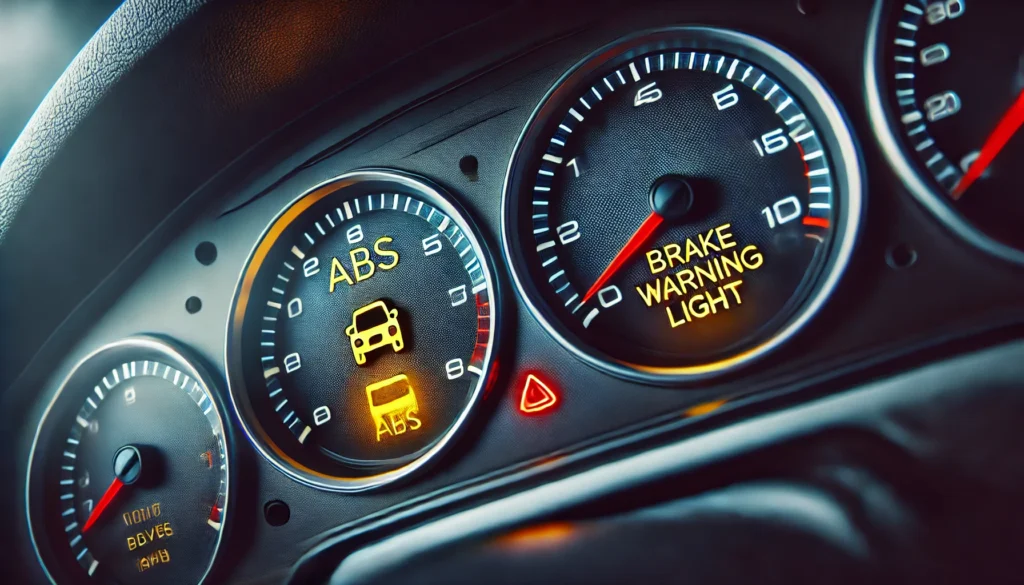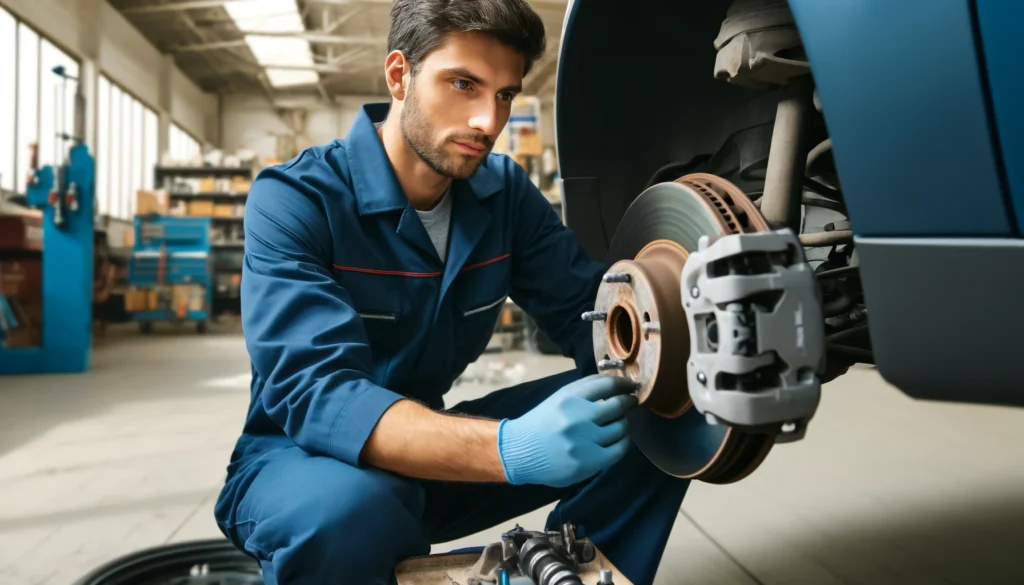When both the ABS (Anti-lock Braking System) and brake lights illuminate on your vehicle’s dashboard simultaneously, it indicates a significant issue within your braking system. This situation should not be ignored, as it can compromise your vehicle’s safety. Understanding the potential causes and knowing how to respond can help ensure your vehicle remains safe to drive.
Understanding the ABS and Brake Lights
The ABS light warns of issues specifically with the Anti-lock Braking System, which helps prevent wheel lockup during hard braking. The brake light, on the other hand, can signal a range of problems within the overall braking system, including low brake fluid, worn brake pads, or engaged parking brake.

Common Causes of Both ABS and Brake Lights Illuminating
Here are some of the common reasons why both lights might come on together:
- Low Brake Fluid:
- Low brake fluid is a common cause that can trigger both ABS and brake lights. The ABS relies on brake fluid to function correctly. If the fluid level drops below the minimum threshold, both warning lights can activate.
- Faulty ABS Module:
- The ABS module controls the Anti-lock Braking System. If this module fails or malfunctions, it can trigger both lights. This issue usually requires a professional diagnosis and repair.
- Brake System Leak:
- A leak in the brake system, such as in the brake lines, hoses, or calipers, can reduce hydraulic pressure, affecting both the standard braking system and the ABS. This situation is dangerous and should be addressed immediately.
- Worn Brake Pads:
- Extremely worn brake pads can cause a drop in brake fluid levels, triggering both lights. Regularly inspecting and replacing brake pads can prevent this issue.
- Damaged Wheel Speed Sensors:
- The ABS relies on wheel speed sensors to monitor each wheel’s speed. If these sensors are damaged or covered in debris, it can cause both the ABS and brake lights to illuminate.

What Should You Do When Both Lights Come On?
If both the ABS and brake lights come on, it’s crucial to address the issue promptly. Here are steps you should take:
- Check the Brake Fluid Level:
- Open the hood and locate the brake fluid reservoir. Ensure the fluid level is within the recommended range. If it’s low, top it up with the appropriate type of brake fluid and check for leaks.
- Inspect the Brake System:
- Look for visible signs of brake fluid leaks around the brake lines, hoses, and calipers. Also, check the brake pads for excessive wear.
- Examine the ABS Sensors and Wiring:
- Inspect the wheel speed sensors and the wiring connected to the ABS system. Clean any dirt or debris and replace any damaged components.
- Use an OBD-II Scanner:
- Use an OBD-II scanner to read any diagnostic trouble codes (DTCs) stored in your vehicle’s computer. These codes can help pinpoint the specific issue causing the lights to come on.
- Consult a Professional Mechanic:
- If you are unable to identify or fix the problem, take your vehicle to a certified mechanic. They have the expertise and tools to diagnose and repair complex brake system issues.
Importance of Immediate Action
Driving with both the ABS and brake lights on can significantly compromise your vehicle’s braking performance and safety. It can lead to longer stopping distances, loss of steering control during hard braking, and increased risk of accidents. Addressing the issue promptly ensures that your braking system remains reliable and effective.
Conclusion
When both the ABS and brake lights are on simultaneously, it indicates a critical issue within your vehicle’s braking system that requires immediate attention. By understanding the common causes and taking the appropriate steps, you can ensure your vehicle remains safe and reliable. Regular maintenance and prompt attention to warning lights can help you avoid costly repairs and maintain the safety of you and your passengers.